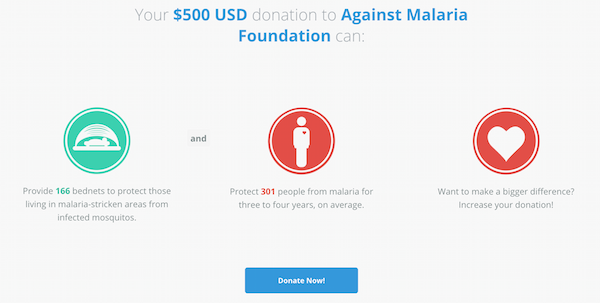Recommendations for donations: 2015-16 edition
Sorry this post arrives so late in the year, probably after most of you have already made your charitable year end donations.  However, I’m following my own advice — see my final point below. Â
Are you fortunate enough to be able to donate resources to others this year?  If so, here are some ideas for how to maximize the effects of your donation.  Some of these are suggestions for specific charities.  But whatever causes and charities are most important to you, there are ways to make your giving more effective — and some of these suggestions apply to all donations.
Do you want your donation to have a large, empirically proven impact?
I’ve talked before about how much I admire GiveWell and Innovations for Poverty Action, which are effectivist organizations to the core — both organizations do empirical, in-depth evaluations of the impact of charities.  This year, the press is taking notice as well; Vox and Wall Street Journal columnist Jason Zweig both wrote about how these organizations help your charity dollars go farther.
GiveWell once again has published their annual top charities list, with the four charities that they’ve determined give the most impact per donation. I recommend following GiveWell’s donation allocation suggestion:
For those seeking our recommended allocation, we simply recommend giving to the top-ranked charity on the list, which is AMF.
Another organization, The Life You Can Save, has an overlapping top charities list — along with a very useful Impact Calculator that lets you see the impact of a donation to each charity.  I don’t endorse this organization as strongly as the others, because I don’t know as much about it (it was founded by ethicist Peter Singer; I don’t believe it does the same degree of rigorous evaluations as the two sites above, but it does depend on some outside evaluations), but a number of these charities have been endorsed by the other two sites, and the Impact Calculator is great.
For instance, if you’re considering donating $500, you can see the impact on GiveWell’s top-rated Against Malaria Foundation:
» Continue reading “Recommendations for donations: 2015-16 edition”
Comments off

